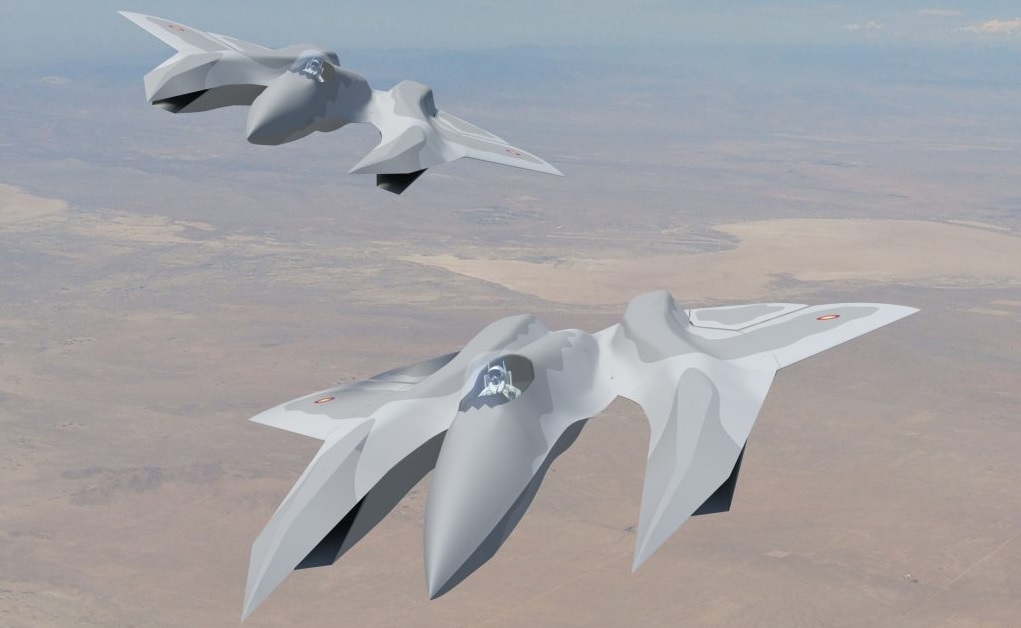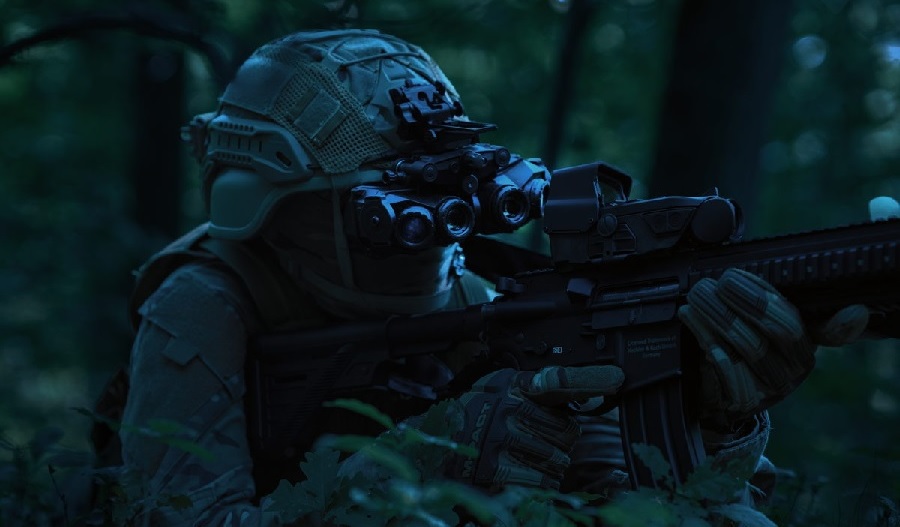World
The U.S. Air Force has taken a significant step forward in its VENOM (Viper Experimentation and Next-gen Operations Model) program, designed to transform the F-16 Fighting Falcon into an advanced autonomous test platform. On April 1, the final F-16 scheduled for modification arrived at Eglin Air Force Base, marking a crucial milestone in the initiative. Transforming the F-16 for Autonomy Currently, three F-16s are undergoing extensive modifications at Eglin Air Force Base. Engineers are integrating cutting-edge technologies such as auto-throttle, advanced flight control systems, and specialized onboard instrumentation. These enhancements will enable the aircraft to operate under autonomous control, managing both thrust and flight surfaces without human intervention. “Modifying the aircraft is the result of a rigorous design phase and brings us one step closer to testing autonomy on a fighter jet with real mission systems and capabilities,” stated Maj. Trent McMullen, the advanced capabilities division chief at the 40th Flight Test Squadron. Simulating Air Combat for Autonomy Training To develop the software required for autonomous operations, the Air Force is utilizing faster-than-real-time simulations. These digital environments expose the AI to various air combat scenarios, including dogfights and beyond-visual-range engagements. The goal is to refine the system’s decision-making skills under combat-like conditions. “These simulations provide an efficient way to train the autonomy to learn complex air combat tactics,” McMullen explained. “A single scenario can be run 1,000 times, allowing us to analyze variations and improve the autonomy’s behaviors.” Ensuring Safety and Performance One of the program's top priorities is safety. Engineers are conducting hardware-in-the-loop testing to ensure the autonomous system remains within safe operational limits. A “human-on-the-loop” approach allows test pilots to monitor and override the system if necessary, preventing unsafe maneuvers. The VENOM team is also exploring how the autonomous F-16 interacts with real-world mission systems. The aircraft will undergo extensive ground testing before moving to developmental and operational flight trials. “Having both DT (Developmental Test) and OT (Operational Test) pilots working together at the same location allows for daily collaboration,” said Lt. Col. Jeremy Castor, VENOM’s operational test lead. “This accelerates our ability to refine and advance autonomous combat capabilities.” F-16 VENOM Specifications Aircraft Model: F-16 Fighting Falcon (Modified for VENOM) Key Upgrades: Auto-throttle, enhanced flight control systems, onboard AI instrumentation Testing Location: Eglin Air Force Base, Florida Autonomy Features: AI-driven flight control, real-time decision-making in combat scenarios Safety Protocol: Human-on-the-loop oversight, strict flight envelope limitations Future Implications of VENOM The first autonomous test flight of a fully modified F-16 is expected soon. With rapid progress in AI-driven combat capabilities, the VENOM program could significantly shape the future of aerial warfare, paving the way for advanced manned-unmanned teaming strategies. “As the VENOM program’s first flight approaches, we are excited to test novel autonomous solutions,” McMullen added. “The strides we’ve witnessed in the simulation environment suggest VENOM will help advance aerial combat capabilities for future crewed and uncrewed platforms.” By integrating cutting-edge AI and flight automation, the U.S. Air Force is setting the foundation for next-generation air combat, where autonomous fighter jets could operate alongside traditional aircraft, enhancing mission effectiveness and reducing pilot workload.
Read More → Posted on 2025-04-03 15:02:38India
India's Unified Payments Interface (UPI) has once again shattered records, processing transactions worth an unprecedented Rs 24.77 lakh crore in March 2025. This milestone underscores the growing reliance on digital payments in the country, with UPI continuing to dominate as the preferred mode of financial transactions. Unprecedented Growth in Digital Transactions According to data from the National Payments Corporation of India (NPCI), UPI recorded 14.03 billion transactions in March 2025, marking a significant increase from the 13.44 billion transactions in February 2025. The total transaction value surged from Rs 22.27 lakh crore in February to Rs 24.77 lakh crore in March, representing an impressive month-on-month growth. On average, UPI facilitated daily transactions worth Rs 79,903 crore in March, highlighting the deep penetration of the digital payment system across urban and rural India. The rapid adoption of UPI has been fueled by increased smartphone penetration, government initiatives, and growing merchant acceptance. UPI's Continued Dominance The sustained rise in UPI transactions is a testament to India's evolving digital economy. Over the past few years, UPI has transformed from a peer-to-peer (P2P) transfer mechanism to a comprehensive payment system encompassing merchant transactions, government services, and even cross-border payments. The March 2025 data further strengthens India's position as one of the fastest-growing digital payment markets globally. The rise of innovative solutions such as UPI Lite for small-value transactions, credit on UPI, and offline payment capabilities has contributed to this exponential growth. Factors Driving UPI’s Record Surge Several key factors have contributed to UPI's record-breaking numbers: Government Push for Digital Economy – The Indian government has actively promoted cashless transactions through incentives, policies, and tax benefits for digital payments. Merchant and Small Business Adoption – With QR code payments becoming the norm, even small vendors and street merchants have embraced UPI, expanding its user base. Rise of Digital Banking and Fintech – The growth of fintech startups, neobanks, and digital wallets integrated with UPI has further accelerated adoption. Festive and Year-End Transactions – March, being the financial year-end, often witnesses a surge in payments, including tax-related transactions, business settlements, and salary disbursements. UPI's International Expansion – With NPCI's efforts to take UPI global, cross-border transactions are also witnessing an uptick, contributing to overall volume. Increased Integration with Financial Services – UPI's integration with micro-loans, insurance, and credit services has further driven its usage among individuals and businesses. Recurring Payments and Auto-Debit Features – The rise in subscription-based services and automated payments has significantly increased transaction volumes. Comparison with Previous Years UPI has seen exponential growth over the past few years. In March 2024, UPI transactions stood at around Rs 14 lakh crore, making the 2025 figures a nearly 77% jump in transaction value. The number of transactions has also grown at a similar pace, indicating the widespread adoption of the platform. Looking Ahead: The Future of UPI With UPI consistently breaking new records, its future looks promising. NPCI has been working on enhancing transaction security, expanding UPI’s international reach, and integrating Artificial Intelligence (AI) for fraud detection. The introduction of new features like credit lines via UPI and interoperability with global payment systems could further boost transaction volumes. The Reserve Bank of India (RBI) and NPCI are also working on initiatives to integrate UPI with India's Central Bank Digital Currency (CBDC), which could revolutionize digital transactions even further. Additionally, efforts to expand UPI usage in rural areas and enhance financial literacy will continue to drive its growth. As India continues its journey towards a cashless economy, UPI is set to play a crucial role in shaping the financial landscape, making digital payments more accessible and seamless for millions. With March 2025 marking yet another milestone, all eyes will be on how UPI continues to evolve and set new benchmarks in the months to come.
Read More → Posted on 2025-04-02 16:15:18World
The United States is bolstering its naval presence in the Middle East by deploying a second aircraft carrier, the USS Carl Vinson, to join the USS Harry S. Truman already stationed in the region. This strategic move aims to enhance regional stability, deter aggression, and ensure the free flow of commerce in vital waterways. Details of the Deployment The USS Carl Vinson, previously operating in the Indo-Pacific, has been redirected to the Middle East. The Pentagon stated that this deployment is intended to "continue promoting regional stability, deter aggression, and protect the free flow of commerce in the region." In addition to the aircraft carriers, the U.S. is deploying additional squadrons and air assets to reinforce defensive air-support capabilities. Context and Strategic Implications This deployment occurs against a backdrop of increased tensions involving Iran and its regional proxies. The U.S. has been conducting airstrikes against Houthi rebels in Yemen, who have targeted civilian shipping and military vessels, disrupting critical maritime routes. The presence of two carrier strike groups enhances the U.S.'s ability to project power, conduct sustained operations, and respond swiftly to emerging threats in the region. Furthermore, the deployment serves as a deterrent signal to Iran amid escalating rhetoric concerning its nuclear program. The U.S. has expressed readiness to respond to any state or non-state actor seeking to broaden or escalate conflict in the region. Potential Outcomes and Considerations The increased U.S. military presence aims to reassure allies and partners of its commitment to regional security. However, it also carries the risk of further escalating tensions, particularly with Iran and its affiliated groups. The international community will be closely monitoring these developments, as the balance between deterrence and provocation remains delicate. In conclusion, the deployment of the USS Carl Vinson alongside the USS Harry S. Truman underscores the strategic importance of the Middle East in U.S. defense policy. It reflects a commitment to safeguarding maritime routes and maintaining stability in a region marked by complex geopolitical dynamics.
Read More → Posted on 2025-04-02 16:09:44
Indian Navy Partners with Kirloskar Oil Engines for Indigenous 6 MW Marine Diesel Engine Development
India
In a significant step towards self-reliance in defense manufacturing, the Indian Navy has signed a contract with Kirloskar Oil Engines Limited (KOEL) for the indigenous design and development of a 6 MW medium-speed marine diesel engine. The deal, valued at ₹270 crore, marks a crucial milestone in India’s quest to reduce dependence on foreign propulsion technology for naval and coast guard vessels. Strengthening India’s Maritime Self-Reliance The contract falls under the ‘Make-I’ category of the Defence Acquisition Procedure (DAP), which focuses on indigenous research and development by Indian defense firms. The project aims to design, develop, and manufacture a state-of-the-art marine engine that will eventually power future Indian Navy and Indian Coast Guard ships. This initiative aligns with the broader ‘Aatmanirbhar Bharat’ (Self-Reliant India) vision, reinforcing India’s capability in critical defense technologies. Kirloskar Oil Engines: A Trusted Partner in Engineering Excellence Kirloskar Oil Engines Limited is a well-established name in India’s power generation and industrial engine sector. With decades of experience in manufacturing high-performance diesel engines, KOEL is expected to leverage its engineering expertise to develop an advanced, reliable, and fuel-efficient marine propulsion system tailored to the Indian Navy’s stringent requirements. The 6 MW medium-speed marine diesel engine is set to be a cornerstone for future naval platforms, replacing the existing dependence on imported engines. The project will involve cutting-edge advancements in fuel efficiency, endurance, and operational reliability to meet the demands of India’s evolving maritime security environment. Enhancing Indigenous Capability in Naval Propulsion India has long relied on foreign suppliers for marine propulsion systems, particularly for high-power naval engines. The development of a domestically designed 6 MW engine is a critical step in bridging this technological gap. This project is expected to contribute to the broader ecosystem of indigenous defense manufacturing by fostering local expertise in high-power engine development and creating opportunities for Indian suppliers in precision engineering, metallurgy, and component manufacturing. Strategic and Economic Benefits The successful execution of this contract will have far-reaching implications. Firstly, it will reduce India’s import dependency, saving foreign exchange and bolstering national security by ensuring self-sufficiency in key defense technologies. Secondly, the project is likely to create new employment opportunities, drive technological innovation, and strengthen India’s defense industrial base. Additionally, the indigenous marine diesel engine will provide operational flexibility to the Indian Navy, ensuring long-term support, maintenance, and upgrades without reliance on foreign Original Equipment Manufacturers (OEMs). This will enhance fleet readiness and sustainment capabilities in the years to come. The development of the 6 MW medium-speed marine diesel engine represents a transformative leap in India’s naval propulsion capabilities. As the project progresses, it will serve as a stepping stone for further advancements in indigenous ship propulsion technology, potentially leading to higher-powered engines for larger warships in the future. With this contract, the Indian Navy, in collaboration with Kirloskar Oil Engines Limited, has taken a decisive step toward realizing its vision of a self-reliant and technologically advanced maritime force, reinforcing India’s stature as a formidable naval power in the Indo-Pacific region.
Read More → Posted on 2025-04-02 16:09:01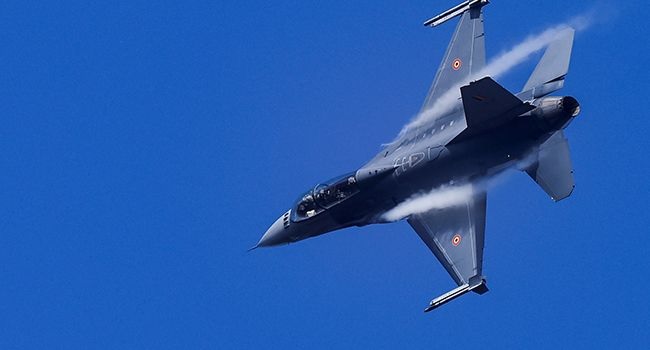
US Approves $5.58 Billion Sale of F-16 Fighter Jets to the Philippines Amid Rising Regional Tensions
World
The United States has approved a potential sale of F-16 fighter jets and associated equipment to the Philippines, a move aimed at bolstering the defense capabilities of its Southeast Asian ally amid escalating tensions in the Asia-Pacific region. Details of the Proposed Sale The U.S. State Department has authorized the possible sale, which includes: 20 F-16 Block 70/72 aircraft. Advanced radar systems, targeting pods, and various munitions. This package is valued at approximately $5.58 billion. The State Department emphasized that the sale would enhance the security of a strategic partner that plays a crucial role in maintaining political stability, peace, and economic progress in Southeast Asia. Strategic Implications The approval of this sale comes at a time when the Philippines is seeking to modernize its military capabilities in response to regional security challenges. The acquisition of F-16s is expected to significantly improve the Philippine Air Force's ability to conduct maritime domain awareness and bolster its air defense capabilities. This development aligns with the broader U.S. strategy to support allies and partners in the Indo-Pacific region, particularly in light of increasing assertiveness from China. The Philippines has faced ongoing maritime disputes with China, making the enhancement of its defense capabilities a priority. Considerations and Next Steps While the State Department has approved the potential sale, it is important to note that this does not indicate that a contract has been finalized. The approval allows for negotiations to proceed, during which details such as pricing and specific configurations will be determined. The proposed sale has garnered attention due to its potential impact on regional security dynamics. As the Philippines continues to navigate complex relationships with neighboring countries, the enhancement of its air defense capabilities through acquisitions like the F-16s will likely play a pivotal role in its national defense strategy.
Read More → Posted on 2025-04-02 15:57:40World
North Korea has recently unveiled its first nuclear-powered submarine, marking a significant escalation in the arms race on the Korean Peninsula. This long-rumored vessel is now a reality, and its massive size suggests the capability to launch long-range nuclear missiles. With this new development, concerns are growing over how South Korea and other nations will respond. A New Phase in North Korea’s Military Expansion As more nations pursue nuclear weapons for strategic deterrence, North Korea has taken a bold step by constructing a nuclear-powered, nuclear-armed submarine. This move is likely to intensify regional tensions and push neighboring countries, particularly South Korea, to reconsider their military strategies. While North Korea’s submarine may still be years away from full operational capability, its mere existence has already reshaped security discussions in the region. South Korea, which has so far relied on conventional submarines, may now accelerate its plans to develop nuclear-powered vessels of its own. North Korea’s Nuclear Submarine Program: A Historical Perspective In 2019, there were discussions about North Korean nuclear disarmament when Kim Jong Un met then U.S. President Donald Trump. However, those talks led to no substantial results, and North Korea has since expanded its nuclear arsenal. The country has also demonstrated various delivery mechanisms for its nuclear weapons, including ballistic missile submarines and underwater drones. North Korea’s journey into nuclear-armed submarines began with the Gorae-class in 2016, which was then the smallest ballistic missile submarine in the world. This experimental design was a step towards refining submarine-launched ballistic missile (SLBM) capabilities. The development of missile submarines continued with modifications to older Soviet-era Romeo-class submarines, adapting them to carry both cruise and ballistic missiles. Specifications and Capabilities of the New Submarine The latest North Korean submarine represents a major leap forward in design and capability. Analysis of its recent unveiling suggests the following estimated specifications: Diameter: Approximately 12 meters (40 feet), comparable to strategic submarines of major world powers. Length: Likely between 100-130 meters (328-427 feet). Missile Armament: Expected to carry the latest versions of the Pukguksong SLBM family, potentially including the Pukguksong-6. Nuclear Reactor: A newly developed propulsion system, possibly with Russian assistance, which significantly extends the submarine’s operational range and endurance. The Pukguksong-6 missile is believed to be around 13 meters long, similar in size to the U.S. Trident missiles. If these missiles achieve intercontinental range capabilities, they could pose a direct threat to American cities from North Korean waters. Strategic Implications: The Nuclear Balance in Korea One of the biggest concerns surrounding this new submarine is its impact on the balance of power in the region. While North Korea has historically relied on land-based nuclear missiles, a fully operational nuclear submarine would introduce a second-strike capability, making North Korea’s deterrent much more credible. This development could push South Korea to reconsider its own nuclear stance. While South Korea currently operates advanced conventionally powered submarines, such as the KSS-III class, these vessels lack the endurance and strategic range of nuclear-powered submarines. With North Korea’s advancements, South Korea’s debate over acquiring nuclear weapons and nuclear submarines is gaining momentum. The Role of Foreign Assistance Although North Korea has been developing nuclear technology for decades, there is widespread speculation that Russia may have provided technological assistance for its submarine program. Possible areas of assistance include: Nuclear propulsion technology. Sonar and noise reduction techniques to enhance stealth capabilities. Missile guidance systems and launch platforms. Despite this potential support, the North Korean submarine is likely to have limited stealth and outdated sensors compared to the advanced nuclear submarines operated by the United States, China, and Russia. However, its main role will be as a strategic deterrent, capable of launching nuclear strikes from concealed positions in the ocean. A New Arms Race on the Horizon? With North Korea’s nuclear submarine entering the equation, the arms race in Northeast Asia is set to intensify. South Korea, despite its technological edge in conventional submarines, may now feel pressure to develop its own nuclear-powered fleet. Additionally, discussions about South Korea acquiring nuclear weapons—once a fringe topic—are now gaining mainstream attention. If South Korea moves forward with nuclear armament, it could set off a chain reaction, with Japan and other U.S. allies also reconsidering their non-nuclear stance. In this scenario, North Korea’s new submarine could be the catalyst for a much larger geopolitical shift. North Korea’s unveiling of a nuclear-powered ballistic missile submarine is a significant step that will alter the security dynamics of the Korean Peninsula and beyond. While operational deployment may still be years away, the mere existence of this submarine has already reignited debates on nuclear policy and military preparedness in South Korea and among its allies. As tensions rise, the world watches closely to see how regional powers will respond to this new challenge.
Read More → Posted on 2025-04-02 15:53:59India
India's Defence Research and Development Organisation (DRDO) is spearheading efforts to develop a high-performance marine diesel engine for the Indian Navy’s upcoming Project-76 submarines. As this critical naval initiative nears final approval from the Cabinet Committee on Security (CCS), DRDO is actively engaging with domestic and global partners to acquire the necessary technology. Project-76: Strengthening India's Naval Power Project-76 aims to construct six advanced conventional diesel-electric submarines indigenously. These submarines will be equipped with cutting-edge technologies, including Air-Independent Propulsion (AIP) for enhanced underwater endurance and next-generation lithium-ion batteries. The Indian government has set an ambitious goal of achieving 90-95% indigenous content, making it imperative to develop a locally produced marine diesel engine rather than rely on imports in the long run. The Need for a Powerful Indigenous Marine Engine Each Project-76 submarine will require two marine diesel engines, each producing over 3,000 horsepower. These engines must seamlessly integrate with other onboard systems while ensuring high reliability, endurance, and stealth—critical factors for underwater operations. Unlike nuclear-powered submarines like the Arihant-class, which rely on nuclear propulsion, these conventional submarines demand advanced diesel technology capable of supporting extended submerged missions. Challenges in Domestic Engine Development Currently, India lacks expertise in designing and manufacturing high-performance marine diesel engines suitable for submarines. While domestic companies like Kirloskar Oil Engines, Cummins India, and Ashok Leyland have experience with industrial and defense-related diesel engines, they have never developed marine propulsion systems of this scale. To bridge this gap, DRDO is considering a Transfer of Technology (ToT) agreement with a foreign manufacturer, enabling knowledge transfer and local production. Establishing a robust supply chain and skilled workforce for such complex systems will require significant investment and time, which must be managed alongside Project-76’s tight timelines. Development Timeline and Expected Induction Project-76 is expected to receive CCS approval by mid-2025, marking the beginning of a three-year design phase. Each submarine will take approximately five years to build, with the first vessel likely to be commissioned into the Indian Navy by 2033. These submarines, estimated to have a displacement of 3,000-4,000 tons, will incorporate stealth technology, advanced sonar systems, and potentially vertical launch systems (VLS) for cruise missiles. Given the tight schedule and the complexity of indigenous engine development, the first two submarines are expected to be powered by imported marine diesel engines. Germany’s MTU (Rolls-Royce Power Systems), known for its reliable MTU 4000 series engines used in German Type 212A submarines, is a strong contender to supply these initial engines. Towards Self-Reliance in Submarine Technology While initial units may use foreign engines, the long-term goal remains complete self-reliance. DRDO’s collaboration with domestic and international partners will pave the way for a fully indigenous marine diesel engine solution, reinforcing India's defense capabilities and reducing dependence on foreign suppliers. Project-76 represents a significant leap in India's submarine warfare capabilities, ensuring the Navy remains at the forefront of maritime defense in the coming decades.
Read More → Posted on 2025-04-02 15:47:34World
The Finnish Navy has deployed its Hamina-class missile craft, PGG Hanko, to the Standing NATO Maritime Group 1 (SNMG1) as part of the Baltic Sentry surveillance operation. This deployment, commencing on Monday, March 31, 2025, marks a significant step in Finland's integration into NATO's collective defense initiatives in the Baltic Sea region. Enhancing Regional Security Baltic Sentry is a NATO-led vigilance activity aimed at bolstering maritime situational awareness and safeguarding critical undersea infrastructure in the Baltic Sea. The operation involves an array of assets, including frigates, maritime patrol aircraft, and naval drones, to deter and defend against potential threats to vital undersea cables and pipelines. This initiative underscores NATO's commitment to protecting essential infrastructure that supports energy supplies and data transmission across member nations. Finland's Active Participation Finland's contribution of PGG Hanko to SNMG1 signifies its proactive role within NATO since becoming a member. The missile craft will operate under NATO command, conducting surveillance and security operations from both Finnish and allied military ports throughout April. This engagement not only enhances the collective maritime defense but also provides the Finnish Navy with valuable operational experience in multinational missions. Context of Increased Vigilance The deployment comes in response to a series of incidents involving damage to undersea cables in the Baltic Sea over the past 15 months. At least 11 cables have been damaged, raising concerns about the security of critical infrastructure. While investigations are ongoing, these events have prompted NATO to intensify surveillance efforts to deter potential sabotage and ensure rapid response capabilities. Future Commitments Looking ahead, the Finnish Navy plans to further support NATO's standing naval forces by deploying a mine countermeasure vessel and another missile craft later this year. These contributions reflect Finland's dedication to regional stability and its commitment to the principles of collective defense within the NATO framework. In summary, the integration of PGG Hanko into NATO's Baltic Sentry operation exemplifies Finland's active participation in enhancing maritime security in the Baltic Sea. This deployment not only strengthens the alliance's defensive posture but also reinforces the collaborative efforts to protect critical undersea infrastructure vital to the region's security and economic stability.
Read More → Posted on 2025-04-02 15:45:32India
Bengaluru-based aerospace start-up Nabhdrishti Aerospace has made a significant leap forward by securing $3 million in seed funding. The funding round was led by Accel, with additional backing from IIMA Ventures and other investors, marking a strong endorsement of the company’s innovative approach to gas turbine technology. Founded in 2023 by aerospace veterans Rohit Chouhan, Arjun Srivatsa, and Antanu Sadhu, Nabhdrishti Aerospace is on a mission to develop fuel-flexible gas turbine engines. This technology aims to reduce India's dependency on imported propulsion systems while simultaneously enhancing domestic capabilities in aerospace and defence sectors. The newly acquired funds will be directed towards expediting the development and testing of engine prototypes. The company plans to initiate flight trials in collaboration with unmanned aerial vehicle (UAV) manufacturers. Additionally, a portion of the investment will be used to expand Nabhdrishti’s workforce, focusing on engineering, production, and customer support functions. One of Nabhdrishti’s key innovations is its dual-use micro gas turbine platforms designed for both aviation and industrial applications. The ND400 engine, engineered for UAVs and hybrid electric aircraft, delivers up to 400 shaft horsepower, making it a strong candidate for next-generation aerial propulsion systems. Meanwhile, the ND2000 engine, developed for industrial and defence applications, boasts a robust 2-megawatt power output, catering to heavy-duty energy and propulsion needs. Beyond just efficiency, Nabhdrishti Aerospace is also pushing towards sustainability. The company is actively exploring the use of green hydrogen and other clean fuels to minimize carbon emissions, aligning its innovations with global trends toward eco-friendly propulsion solutions. This funding milestone highlights the growing confidence in India’s ability to develop indigenous propulsion technologies. By advancing fuel-flexible gas turbines, Nabhdrishti Aerospace is positioning itself as a crucial player in the country’s aerospace sector. Its progress not only enhances India’s self-reliance in critical propulsion technologies but also contributes to global efforts in sustainable aviation and industrial power generation.
Read More → Posted on 2025-04-02 15:40:10World
Stavatti Aerospace, a U.S.-based aviation firm led by CEO and Chief Designer Chris Beskar, has proposed its SM-39 Razor aircraft concept to India as a potential addition to its fighter fleet. Marketed as a next-generation fighter, Stavatti asserts that the SM-39 offers advanced capabilities at a competitive unit cost of $85 million, with a total program cost estimated at $3.3 billion. Despite these claims, Stavatti has yet to produce an operational aircraft, raising questions about the feasibility of their proposal. SM-39 Razor: Ambitious Specifications The SM-39 Razor is presented as a sixth-generation platform designed for air dominance, interception, and all-weather strike missions. Stavatti outlines two ambitious engine options: proprietary dual NeoThrust™ variable cycle turbofans, each purportedly producing over 52,000 pounds of thrust using magnetohydrodynamic (MHD) technology, or dual General Electric Adaptive Cycle Engine (ACE) turbofans, each rated at 50,000 pounds of thrust. These propulsion systems are claimed to enable the aircraft to achieve speeds exceeding Mach 4, incorporating stealth features and sophisticated artificial intelligence integration. However, these specifications remain theoretical, as the company lacks a proven manufacturing track record. Stavatti's Track Record and Credibility Concerns Founded in 1994, Stavatti Aerospace has a history of ambitious, futuristic aircraft designs that have not progressed beyond the conceptual stage. Projects such as the SM-36 Stalma, the SM-27 Machete, and the SM-39 Razor have been introduced with detailed specifications and renderings but have not resulted in tangible products. This pattern has led to skepticism within the aerospace community regarding the company's ability to transition from design to production. In March 2024, the Niagara County Industrial Development Agency (NCIDA) terminated $2.15 million in tax incentives previously awarded to Stavatti due to a lack of progress on their proposed aircraft manufacturing facility. The agency cited concerns over the company's inability to demonstrate substantial development, further questioning Stavatti's credibility in delivering on its promises. Analysis: Evaluating the Proposal's Feasibility India's ongoing search for approximately 114 new jets under its Multi-Role Fighter Aircraft (MRFA) program has attracted offers from established global aerospace manufacturers. Stavatti's unproven concept faces significant challenges when compared to competitors with demonstrated manufacturing capabilities and operational aircraft. The ambitious performance goals for the SM-39, such as Mach 4+ speeds and AI-driven systems, align with theoretical discussions for future sixth-generation fighters. However, without a flying prototype or demonstrated production capabilities, these claims remain speculative. Furthermore, the proprietary NeoThrust engines are an internal Stavatti concept lacking independent validation, and any potential use of GE Aerospace's ACE technology would depend on a partnership that has not been publicly confirmed by GE Aerospace. Given Stavatti's history and the current state of the SM-39 project, India's defense procurement authorities are likely to approach this proposal with caution. The absence of a proven track record in aircraft manufacturing and the speculative nature of the SM-39's capabilities present substantial risks. In contrast, established manufacturers offer platforms with verified performance and existing production lines, providing a more reliable option for India's defense needs. Conclusion While innovation and new entrants in the aerospace industry can drive technological advancements, the credibility and feasibility of such proposals are critical. Stavatti Aerospace's pitch of the SM-39 Razor to India introduces an ambitious concept; however, the company's lack of tangible progress in aircraft production and the speculative nature of the SM-39's capabilities raise significant concerns. India's defense procurement decisions will likely favor options that offer proven reliability and lower developmental risk.
Read More → Posted on 2025-04-02 15:37:54World
Thales has introduced its latest advancement in night vision technology—the PANORAMIC quad-tube night vision goggle. This state-of-the-art device is tailored for special operations forces and specialized units undertaking high-risk missions, including counter-terrorism and hostage rescue. First showcased at the 2025 SOFINS exhibition, the PANORAMIC goggle is designed to significantly enhance situational awareness in low-light conditions. Key Features and Advantages Ultra-Wide Field of View: The PANORAMIC goggle employs four light intensification tubes, offering a field of view close to that of the human eye. This expansive perspective allows users to detect threats across their peripheral vision without the need for head movement, facilitating quicker and more accurate responses. Compact and Lightweight Design: Weighing only 740 grams and matching the width of a standard helmet, the goggle ensures ergonomic efficiency and comfort during extended use. Its compact design does not compromise performance, making it ideal for dynamic field operations. Adaptive Functionality: The system features a flip-up mechanism for seamless helmet integration. Additionally, the outer tubes can be raised individually and will automatically power off to maintain discretion, providing users with adaptable operational capabilities. Compatibility and Future-Proofing The PANORAMIC goggle is fully compatible with Thales’s XTRAIM weapon sight, ensuring cohesive integration with existing equipment. It is also designed to accommodate future upgrades, supported by an optimized maintenance plan to ensure high operational availability. Notably, the device is 100% made in France and is ITAR-free, making it accessible to a broad range of domestic and international users. Thales’s Legacy in Night Vision Technology Thales has a longstanding history of providing advanced night vision solutions. Prior to the PANORAMIC goggle, Thales developed the O-NYX night vision goggles, which were notably lightweight at less than 350 grams and featured a 51° field of view, expanding the observed scene by 70% compared to conventional goggles. The French armed forces demonstrated renewed trust in Thales by placing an additional order for 3,000 O-NYX goggles, underscoring the company's commitment to enhancing soldier perception during night-time missions. Conclusion The introduction of the PANORAMIC quad-tube night vision goggle represents a significant leap in night vision technology, offering enhanced situational awareness, ergonomic design, and compatibility with existing systems. Thales continues to demonstrate its dedication to providing cutting-edge solutions that meet the evolving needs of military operations, ensuring that personnel are equipped with the tools necessary for success in challenging environments.
Read More → Posted on 2025-04-02 15:34:45World
Rafael Advanced Defense Systems’ Typhoon 30 Remote Weapon Station (RWS) has successfully demonstrated its counter-drone capabilities in a recent desert drill. The system underwent rigorous counter-unmanned aerial system (c-UAS) tests, showcasing its effectiveness in engaging aerial threats. Successful Desert Drill Performance The Israeli defense company revealed that the Typhoon 30 RWS participated in a c-UAS demonstration in February, where it was tested against drones flying at various ranges. Although the system missed its first shot during the drill, it quickly adjusted and successfully neutralized the drone with a follow-up strike. Originally designed for naval applications, the test also highlighted its ability to be mounted on a 20-foot (6-meter) modular platform, making it adaptable for land-based operations. This expands its potential use beyond naval vessels to ground vehicles and stationary defense installations. Typhoon 30: Features and Specifications The Typhoon 30 RWS is armed with the Northrop Grumman 30 mm Mk44 Bushmaster gun, capable of firing at adjustable rates, from single shots to 200 rounds per minute. Its key specifications include: Ammunition Capacity: 190 ready-to-fire rounds, with a total reserve of 380 rounds. Target Engagement: Capable of countering multiple threats, including drone swarms and fast-moving surface targets. Advanced Stabilization: Features high-precision targeting, ensuring accuracy even in all-weather, day-and-night operations. Remote Operation: The system allows operators to engage threats safely from a distance, reducing risk to personnel. Israel’s c-UAS Initiative Recognizing the growing drone threat, Israel’s Ministry of Defense organized a counter-drone competition from October 2024 to February 2025. The event invited local defense firms to showcase their c-UAS technologies, with the promise of full government funding for the most effective system. During this competition, Rafael presented its medium-range Mini Typhoon RWS, facing competition from Elbit Systems and Israel Aerospace Industries, both of which unveiled their own advanced drone defense solutions. The successful performance of the Typhoon 30 system in the desert drills reinforces its reliability and adaptability in modern warfare, making it a strong contender for future counter-drone defense contracts.
Read More → Posted on 2025-04-02 15:12:59World
China has deployed its Shandong aircraft carrier along with 21 warships in a large-scale military drill surrounding Taiwan, heightening tensions in the region. The exercises, involving air, naval, ground, and missile forces, mark one of the most expansive People’s Liberation Army (PLA) operations in recent months. Taiwan’s Ministry of National Defense confirmed that the Shandong carrier group entered its response zone on March 30, prompting heightened surveillance and defensive measures. Taipei has accused China of using “gray-zone” tactics—aggressive military posturing that falls short of open conflict but tests Taiwan’s defenses, disrupts routine military operations, and exerts political pressure. The exercises also come amid growing international concerns over Beijing’s increasing military assertiveness in the Indo-Pacific. Taiwan has denounced these maneuvers as destabilizing, warning that China’s activities challenge the regional security architecture and the rules-based international order. Strategic Implications China’s use of its first domestically built aircraft carrier, the Shandong, in such close proximity to Taiwan signals a shift in Beijing’s military strategy. Previously, the carrier had been deployed in the Western Pacific, but this new drill suggests China is enhancing its ability to project power near Taiwan. Additionally, the coordination between multiple branches of the PLA, including naval and air forces, demonstrates China’s readiness for more complex military operations. This move serves as a warning to both Taiwan and its allies—particularly the United States and Japan, which have expressed concerns about Beijing’s actions. Taiwan’s Response Despite the increased PLA activity, Taiwan’s military has maintained a calm but vigilant stance. The Ministry of National Defense has reaffirmed its commitment to avoiding escalation or provocation, but it remains prepared to defend its sovereignty and the safety of its people. No live-fire exercises have been reported so far, but Taiwan continues to monitor the PLA’s evolving tactics, acknowledging that Beijing’s military pressure is unlikely to subside anytime soon. What’s Next? China’s latest drills reinforce its long-standing objective of intimidating Taiwan while testing the responses of Taipei and its allies. As tensions rise, regional stability remains fragile, with both China and Taiwan preparing for future confrontations that could shape the geopolitical landscape of the Indo-Pacific.
Read More → Posted on 2025-04-01 15:44:22World
Boeing has been selected to advance to the next phase of the U.S. Army's Indirect Fires Protection Capability (IFPC) Increment 2 Second Interceptor competition. This initiative aims to develop a medium-range interceptor to defend fixed and forward operating bases against emerging aerial threats, including cruise missiles and unmanned aerial systems (UAS). The IFPC Increment 2 program is a pivotal component of the Army's layered air defense strategy, designed to bridge the gap between short-range systems like the Maneuver-Short Range Air Defense (M-SHORAD) and long-range platforms such as the Patriot missile system. Boeing's proposed interceptor is engineered to address low-flying, mid-range threats that are increasingly prevalent on modern battlefields. Jim Leary, Boeing's Executive Director of Business Development for Precision Engagement Systems, emphasized the company's commitment: "We understand warfighter needs and the dynamic environments soldiers operate in, and our goal is to keep them safe with an innovative, affordable offering that leverages our industry-leading missile expertise." He further noted that the design offers increased magazine depth, enhanced speed to target, greater range, and improved maneuverability to effectively counter evolving threats. A notable feature of Boeing's interceptor is its incorporation of a Modular Open Systems Approach (MOSA). This design philosophy facilitates rapid integration of software and hardware updates, ensuring adaptability to emerging threats and promoting cost-efficiency and sustained performance across diverse operational environments. The U.S. Army has underscored the necessity for an intermediate air defense solution capable of neutralizing threats that are beyond the reach of short-range systems but do not warrant engagement by long-range platforms. The Second Interceptor initiative is integral to providing continuous protection for critical sites, particularly against fast-moving and unpredictable aerial threats. In January 2024, the Army announced plans to hold a competition for a second interceptor for IFPC Increment 2, aiming to address both subsonic and supersonic cruise missile threats. The selected vendors are expected to participate in a technology demonstration during the fiscal years 2026 to 2027, with the goal of awarding a development, qualification, and test effort following this demonstration. Boeing's advancement in this competition reflects its extensive experience in missile development and air defense systems. The company's proposal is informed by expertise from multiple missile programs, including the PAC-3 interceptor, Ground-Based Midcourse Defense, Avenger, Harpoon, and SLAM-ER. This depth of knowledge positions Boeing to deliver a solution that meets the Army's requirements for a versatile and effective medium-range interceptor. As the competition progresses, further testing and evaluation phases are anticipated in the coming months. The Army will assess each candidate's potential to deliver a deployable, reliable, and scalable interceptor suitable for operational use. The outcome of this competition will significantly influence the future landscape of U.S. Army air defense capabilities, ensuring that forward operating bases and critical installations are well-protected against a spectrum of aerial threats.
Read More → Posted on 2025-04-01 15:37:38World
Isar Aerospace has achieved a major milestone by successfully launching its Spectrum rocket, marking the first time an orbital rocket has lifted off from continental Europe. The launch took place at Norway’s Andøya Spaceport at 12:30 PM CEST, making the German company a frontrunner in Europe’s commercial space race. Although the mission lasted only 30 seconds, it was a crucial test that met all primary objectives, including a clean liftoff and the successful activation of the Flight Termination System. The rocket was intentionally guided into the sea in a controlled descent, ensuring safety for all personnel and infrastructure. A Breakthrough for Europe’s Space Industry Isar Aerospace’s CEO and Co-founder, Daniel Metzler, called the test flight a “great success,” emphasizing that the company has now proven its ability to not only design and manufacture rockets but also launch them. This development is a game-changer for Europe’s space ambitions, which have long relied on non-European launch sites. The company is now analyzing flight data to refine its technology for upcoming missions. Importantly, the launch pad at Andøya Spaceport remained intact, allowing future flights to proceed without major delays. Spectrum launch vehicles #2 and #3 are already in production, taking advantage of Isar Aerospace’s advanced manufacturing process, which is designed to scale rapidly. At its headquarters near Munich, the company is preparing to produce up to 40 rockets per year, a significant capacity for the growing satellite launch market. This ability to iterate and improve quickly gives Isar Aerospace a competitive edge in an industry that demands both reliability and efficiency. The Growing Demand for European Launch Capabilities Europe has historically faced a gap in independent access to space, relying on facilities in regions like South America. Isar Aerospace is now positioned to fill that void, offering a European solution for the growing demand for flexible and cost-effective satellite launch services. Metzler noted that the company’s success contributes to closing a critical blind spot in Europe’s security and technological independence. Bulent Altan, Chairman of Isar Aerospace and a former SpaceX executive, praised the clean-sheet design of the Spectrum rocket, stating that the company is on track to meet global market demand. With a payload capacity of 1,000 kg, Spectrum rockets are ideal for small- and medium-sized satellite deployments, making them highly attractive to commercial and governmental customers worldwide. Norway’s Key Role in the Launch The launch was made possible through strong collaboration with Norway, which played a pivotal role in securing regulatory approval. The Norwegian Civil Aviation Authority issued Europe’s first Launch Operator License for such a test flight, paving the way for future commercial operations at Andøya Spaceport. Metzler expressed gratitude towards Norwegian authorities and the local community, acknowledging their support in enabling this historic mission. The partnership with Norway demonstrates how European nations can work together to establish a robust space infrastructure. The Road Ahead With the first successful flight now behind them, Isar Aerospace is focused on refining its technology and preparing for future missions. The company aims to transition from test flights to regular commercial launches, further strengthening Europe’s role in the global space industry. By securing independent access to space, Isar Aerospace is not only advancing its own ambitions but also contributing to Europe’s broader efforts to establish a sovereign, competitive space sector. The success of the Spectrum rocket is just the beginning of what could be a transformative era for European commercial spaceflight.
Read More → Posted on 2025-04-01 15:23:38
U.S. State Department Silent on USCIRF’s Push to Designate India as a ‘Country of Particular Concern
India
The U.S. State Department has chosen not to comment on the United States Commission on International Religious Freedom's (USCIRF) recommendation to designate India as a "Country of Particular Concern" (CPC) in its latest annual report. This marks another year in which the USCIRF has pushed for India’s inclusion in the CPC list, a call that has consistently been ignored by the U.S. government. State Department spokesperson Tammy Bruce confirmed that the department is reviewing the USCIRF's findings but refrained from making any remarks about potential diplomatic actions. This pattern of non-committal responses reflects Washington's careful approach to balancing human rights concerns with strategic interests in South Asia. The USCIRF has been advocating for India's CPC status since 2020, citing what it describes as systematic violations of religious freedoms. Its latest report claims that religious minorities in India are facing increasing violence, suppression, and restrictive policies, both domestically and internationally. Notably, the commission has also called for sanctions against India's external intelligence agency, the Research and Analysis Wing (RAW), over its alleged role in targeting dissidents abroad. India has strongly rejected these accusations, dismissing the USCIRF as a "biased and agenda-driven entity" with no real authority over U.S. foreign policy decisions. New Delhi argues that the commission selectively targets India while ignoring similar issues in other countries. Indian officials have also pointed out that the U.S. State Department itself has not adopted the USCIRF's recommendations, indicating a disconnect between the commission’s stance and actual U.S. policy. Currently, the CPC list includes countries like China, North Korea, and Pakistan, nations that the U.S. government officially considers as engaging in extreme religious persecution. Despite repeated recommendations, India has never been placed on this list, reflecting the broader geopolitical and economic considerations that shape Washington’s approach toward New Delhi. While the USCIRF continues to push its agenda, the U.S. administration appears unwilling to escalate tensions with India, a key partner in countering China's influence in the Indo-Pacific. This diplomatic tightrope walk underscores the complex nature of international human rights advocacy when intertwined with global power dynamics.
Read More → Posted on 2025-04-01 15:17:17India
India's Defence Research and Development Organisation (DRDO) is working on a groundbreaking technology called the Ejectable Rocket Ignition System to enhance the performance of the Pinaka MkIII multi-barrel rocket launcher (MBRL). This innovation aims to improve range, fuel efficiency, and rapid reloading, making India's indigenous rocket artillery more powerful and versatile. The project is being led by DRDO's Armament Research and Development Establishment (ARDE) in Pune, reinforcing India's commitment to self-reliance in advanced defence technology. What is the Ejectable Rocket Ignition System? Unlike conventional ignition systems that stay attached to the rocket throughout its flight, the ejectable ignition system is designed to separate from the rocket after launch. This lightens the rocket mid-flight, enhancing fuel efficiency and allowing for: Extended Range – Less weight means greater propulsion efficiency, potentially exceeding the current 120+ km range. Faster Reloading – A modular ignition system can enable quicker rearming of launchers in battlefield conditions. Improved Safety – Enhanced handling and storage safety, reducing risks during transportation and deployment. Pinaka MkIII: A Leap Forward in Indian Rocket Artillery The Pinaka MkIII is the next-generation variant of India’s homegrown 300mm multiple rocket launch system, designed to outperform foreign counterparts like Russia’s BM-30 Smerch. The key specifications of the Pinaka MkIII include: Range: Expected to exceed 120 km with improved aerodynamics. Speed: Capable of reaching speeds of Mach 4.7. Operational Altitude: Potentially up to 40 km. Warheads: Can carry high-explosive, fragmentation, cluster munitions, and precision-guided payloads. Integration with Advanced Technologies The development of the ejectable ignition system is part of a larger DRDO initiative that includes: Guidance kits for improved accuracy. Trajectory correction systems to enhance precision. Ramjet propulsion research in collaboration with IIT Madras for even longer-range applications. Next Steps and Future Prospects The project is progressing swiftly, with possible trials within the next six months. High-speed dynamic testing will be critical to ensure the ignition system functions correctly under extreme launch conditions. The successful implementation of this technology will significantly boost India's artillery strength, providing the Indian Army with a more lethal, efficient, and rapid-response rocket system.
Read More → Posted on 2025-04-01 15:15:09World
In a surprising turn of events, the U.S. Navy has announced that its next aircraft carrier, originally set to be named USS Enterprise (CVN 80), will instead be christened USS Musk. This marks the first time in history that an active Senior Advisor to the President has had a warship named in their honor. The executive order authorizing the name change is expected to be signed later today, reinforcing the administration’s efforts to revamp the Navy’s image and shipbuilding priorities. A Symbol of Modern Innovation The USS Musk will be the third Gerald R. Ford-class aircraft carrier and is expected to be commissioned by 2029 to replace the aging USS Dwight D. Eisenhower (CVN 69). Ford-class carriers represent the cutting edge of naval warfare, featuring advanced electromagnetic aircraft launch systems (EMALS), improved nuclear reactors, and an overall reduction in crew size due to automation. It is no coincidence that the Navy chose this particular ship to bear the name of Elon Musk, who has been instrumental in revolutionizing space travel, electric vehicles, and artificial intelligence. The inclusion of EMALS—an electromagnetic launch system—aligns symbolically with Musk’s emphasis on electric-powered technologies. However, it remains to be seen whether President Trump, who previously criticized EMALS in favor of traditional steam catapults, will support its continued use on the USS Musk. A Shift in Naval Traditions This renaming is part of a broader initiative under the "Make Ship Names Great Again" campaign, aimed at countering what the administration sees as unnecessary political correctness in military traditions. Some analysts view this decision as a move to embrace figures who represent innovation and economic growth rather than historical figures or military heroes. Critics argue that naming an aircraft carrier after a living, politically connected individual is a break from long-standing traditions and could set a controversial precedent. Adding to the controversy, reports have surfaced suggesting that a new U.S. Navy Signal Intelligence (SIGINT) vessel could be named after Secretary of Defense Pete Hegseth, though the White House has denied this. Meanwhile, speculation continues that the USS Constitution, the Navy’s oldest commissioned warship, may soon be decommissioned. Critics argue that retiring the wooden ship is an unnecessary erasure of history, but officials insist it is an outdated relic unfit for modern naval warfare. The Bigger Picture The decision to rename CVN 80 as USS Musk fits into a broader narrative of redefining U.S. military priorities. With China rapidly expanding its naval capabilities—launching its new Type-004 Fujian-class carriers—the U.S. Navy is under pressure to maintain its technological edge. The Ford-class carriers, including USS Musk, represent the future of American sea power. However, the controversy surrounding this naming choice suggests that, for many, military tradition still holds significant weight. As the ship nears its launch later this year, debate will continue over whether the USS Musk represents a bold new vision for the Navy or an unnecessary politicization of military assets. Regardless, one thing is certain: this aircraft carrier’s name will keep it in the spotlight for years to come.
Read More → Posted on 2025-04-01 15:10:07India
Pakistan is gearing up for a major enhancement of its attack helicopter fleet by acquiring additional Z-10ME helicopters from China. This strategic move is seen as a direct counter to India’s ambitious procurement of 156 Light Combat Helicopters (LCH) Prachand, designed for high-altitude warfare. In a significant twist, Pakistan is also exploring a possible collaboration with Turkey to integrate advanced Turkish weaponry into these Chinese-made helicopters, bolstering their firepower and survivability. India’s Prachand, developed by Hindustan Aeronautics Limited (HAL), is a highly versatile combat helicopter tailored for operations in challenging terrains, including the Himalayas and the Siachen Glacier. With an acquisition cost of around ₹62,000 crore (approximately $6.1 billion), India's massive order includes 90 helicopters for the Army and 66 for the Air Force. The helicopter’s ability to operate at altitudes above 5,000 meters, coupled with advanced weapons like air-to-air missiles, makes it a formidable asset. Faced with this growing aerial threat, Pakistan is intensifying its military ties with China to bolster its own attack helicopter capabilities. The Z-10ME, a modified export variant of the Chinese Z-10, features upgrades such as a more powerful WZ-9G engine, enhanced defensive systems, and measures to reduce its infrared signature, improving survivability against modern air defense threats. Initial deliveries to Pakistan are expected by 2025, marking a renewed push after earlier failed attempts to acquire attack helicopters from the U.S. (AH-1Z Viper) and Turkey (T129 ATAK) due to export restrictions. Beyond direct acquisition, Pakistan is reportedly in discussions with China to locally assemble the Z-10ME. Establishing an assembly line would not only reduce dependency on foreign suppliers but also enhance Pakistan’s domestic defense industry, fostering local expertise in helicopter maintenance and modifications. This move could allow Pakistan to customize the Z-10ME to meet its specific operational needs along the Line of Control (LoC) and in counter-insurgency missions. Adding another layer to this expansion, Pakistan is considering integrating Turkish weapon systems onto the Z-10ME platform. Despite Washington blocking the sale of T129 ATAK helicopters due to U.S.-controlled engine technology, Turkey has emerged as a key defense partner for Pakistan. Turkish weapons like UMTAS anti-tank guided missiles, Cirit laser-guided rockets, and advanced avionics could significantly enhance the Z-10ME’s battlefield capabilities. Such an upgrade would not only strengthen Pakistan’s aerial combat potential but also deepen its trilateral defense cooperation with China and Turkey, bypassing Western restrictions. While the Z-10ME is not as battle-tested as the American AH-64 Apache or the Russian Mi-28, its reported 800 km range and 1,500 kg weapon payload make it a competitive platform. In contrast, India’s Prachand, with a range of 700 km, has proven its high-altitude prowess, demonstrated by successful landings at nearly 15,800 feet. By equipping the Z-10ME with Turkish technology, Pakistan aims to create a capable counter to the Prachand, ensuring a balance of power in the region. If Pakistan successfully procures and assembles the Z-10ME, it could grow its fleet beyond 30 helicopters, though official numbers remain undisclosed. A successful integration of Turkish weaponry could also pave the way for Pakistan to export a customized version of the Z-10ME, mirroring India’s aspirations to sell the Prachand globally. This helicopter expansion underscores Pakistan’s commitment to maintaining a credible aerial deterrent against India’s rapidly modernizing military. By leveraging Chinese and Turkish defense technologies, Pakistan seeks to secure its strategic interests while reducing reliance on Western arms markets, where procurement hurdles remain a persistent challenge.
Read More → Posted on 2025-04-01 15:07:13World
In response to escalating aerial threats, Ukraine has unveiled a mobile air defense system ingeniously mounted on the chassis of a U.S.-supplied High Mobility Multipurpose Wheeled Vehicle (HMMWV), commonly known as the Humvee. This adaptation underscores Ukraine's commitment to enhancing its defensive capabilities through innovation and resourcefulness. Design and Features The transformation of the Humvee into a formidable air defense platform involves significant modifications: Armored Cabin: The original vehicle's cabin has been replaced with a custom-built armored structure, providing enhanced protection for the crew against battlefield threats. Missile Launch System: Equipped with Soviet-era R-73 missiles, originally designed for air-to-air engagements, the system has been adapted for ground-based launches. The R-73 is a short-range, infrared-guided missile known for its agility and effectiveness in targeting low-flying aerial threats. Electronic Warfare Capabilities: To counter the increasing use of drones in modern warfare, electronic warfare modules are mounted atop the vehicle. These systems are designed to disrupt and neutralize enemy unmanned aerial vehicles (UAVs), particularly first-person view (FPV) drones that pose significant risks on the battlefield. Operational Advantages The integration of the R-73 missile system onto a mobile Humvee platform offers several strategic benefits: Mobility and Agility: The Humvee's renowned maneuverability allows for rapid deployment and repositioning, enabling Ukrainian forces to respond swiftly to aerial threats across diverse terrains. Fire-and-Forget Capability: The R-73 missiles operate on a fire-and-forget principle, allowing operators to engage targets and immediately relocate to avoid counterattacks, thereby enhancing survivability in contested environments. Cost-Effective Adaptation: By repurposing existing missile stockpiles and vehicle platforms, Ukraine achieves a cost-efficient solution to bolster its air defense without the need for entirely new systems. Context and Strategic Implications The development of this Humvee-based air defense system is part of Ukraine's broader strategy to enhance its defensive capabilities amid ongoing conflicts. The system has been deployed to frontline units, including the 3rd Assault Brigade of the Ukrainian Armed Forces, to counter Russian aerial threats effectively. This initiative complements other efforts, such as the collaboration with the United Kingdom on the Gravehawk air defense system, which also utilizes modified R-73 missiles for ground-based air defense. By integrating advanced missile technology with mobile platforms like the Humvee, Ukraine not only addresses immediate security concerns but also demonstrates a commitment to innovative defense solutions that can adapt to evolving threats on the modern battlefield.
Read More → Posted on 2025-04-01 15:05:27Search
Top Trending
-
 Agneepath Scheme replaced with Sainik Samman Scheme 2024, Defence Minister Rajnath Singh Relaunched Agniveer Scheme
Agneepath Scheme replaced with Sainik Samman Scheme 2024, Defence Minister Rajnath Singh Relaunched Agniveer Scheme
-
 India's TEDBF Program Takes Shape First Flight by 2028: Aiming for Naval Supremacy with Advanced Stealth and Technology
India's TEDBF Program Takes Shape First Flight by 2028: Aiming for Naval Supremacy with Advanced Stealth and Technology
-
 Pakistan Announces 15% Increase in Defence Budget for 2024-25 Amid Economic Crisis
Pakistan Announces 15% Increase in Defence Budget for 2024-25 Amid Economic Crisis
-
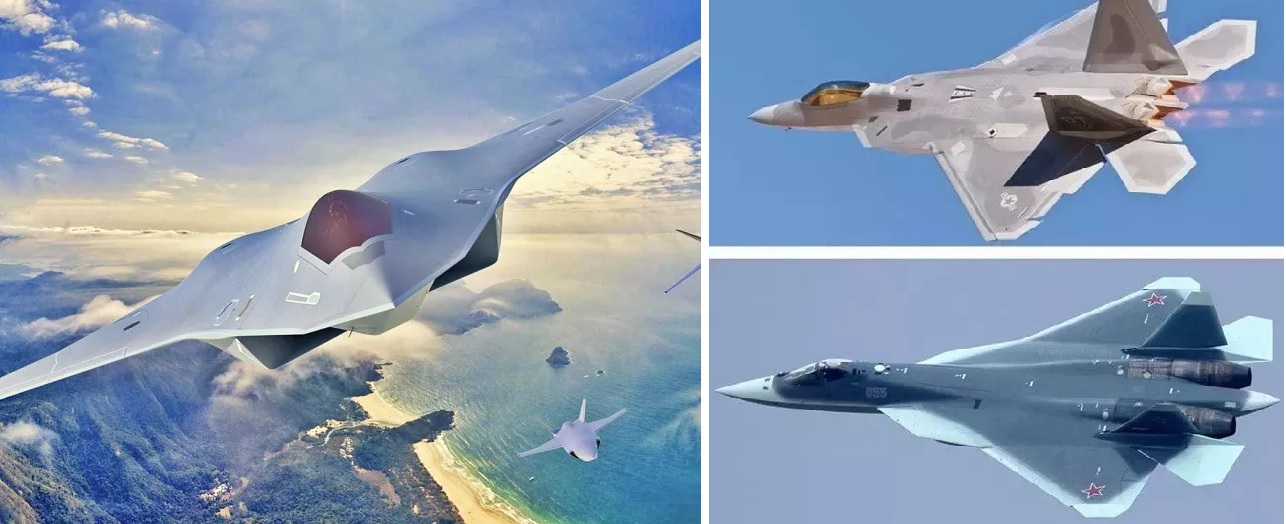 Key Differences Between 5th vs. 6th Generation Fighter Jets
Key Differences Between 5th vs. 6th Generation Fighter Jets
-
 What Would Happen if the USA Left NATO? A Comprehensive Analysis
What Would Happen if the USA Left NATO? A Comprehensive Analysis
-
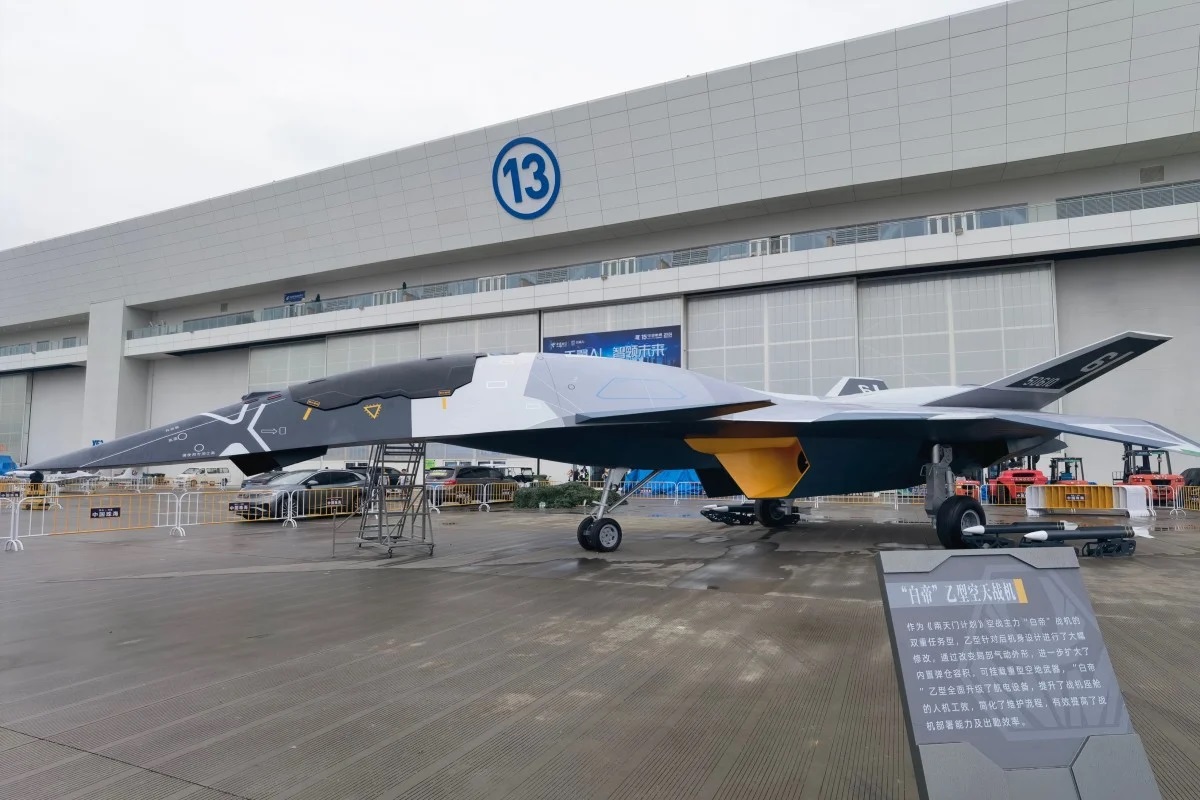 China Unveils the 6th-Generation “Baidi B-Type” Aerospace Fighter Concept
China Unveils the 6th-Generation “Baidi B-Type” Aerospace Fighter Concept
-
 China's Latest DF-31AG ICBM Test: A Strategic Leap in Global Missile Capabilities
China's Latest DF-31AG ICBM Test: A Strategic Leap in Global Missile Capabilities
-
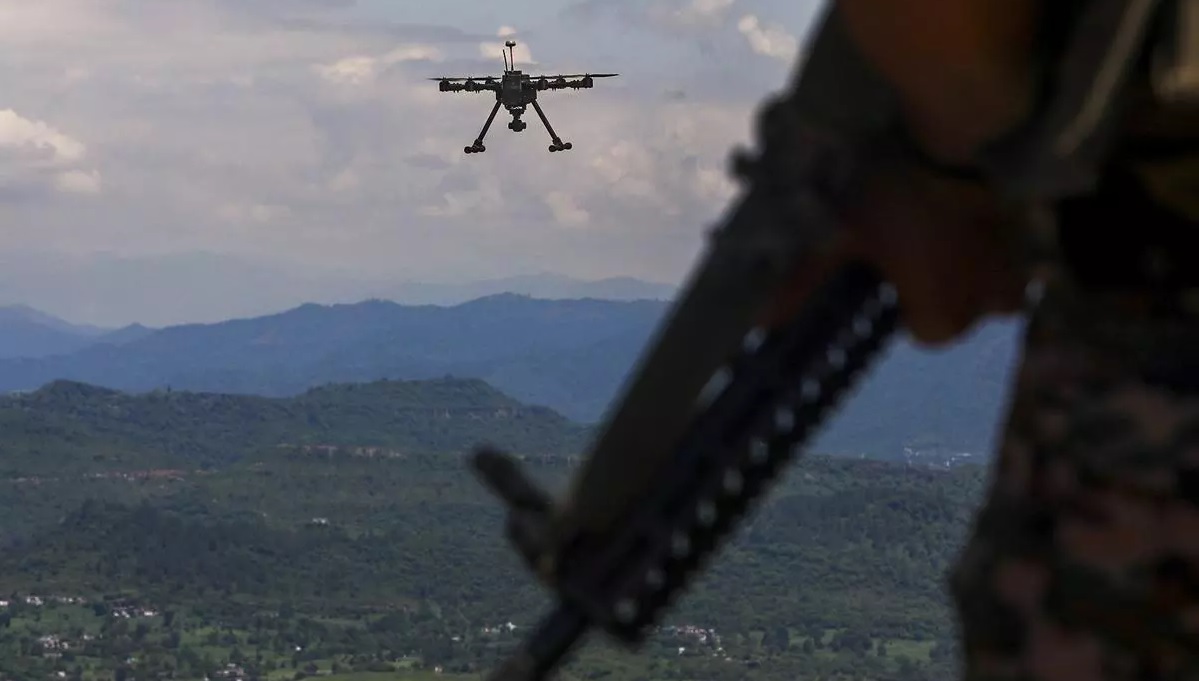 India's Defence Ministry Warns Against Chinese Parts in Military Drones Amid Security Concerns
India's Defence Ministry Warns Against Chinese Parts in Military Drones Amid Security Concerns
Top Trending in 4 Days
-
 Elon Musk’s SpaceX Leads Bid for Trump’s Ambitious “Golden Dome” Missile Shield
Elon Musk’s SpaceX Leads Bid for Trump’s Ambitious “Golden Dome” Missile Shield
-
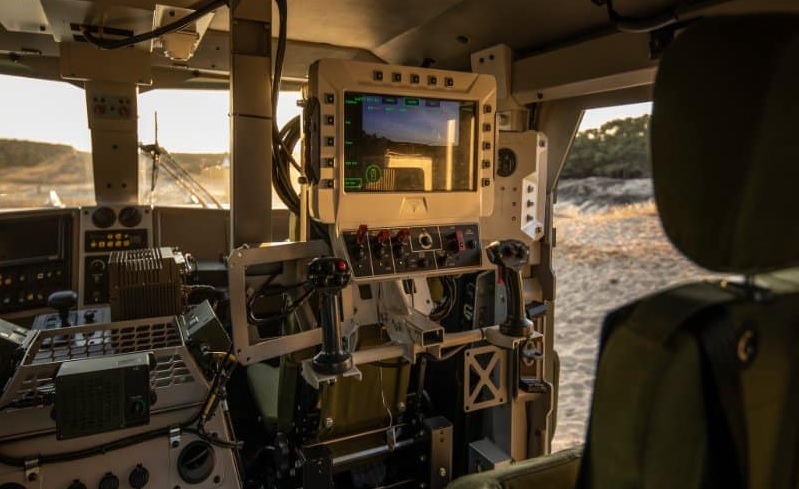 JCBL Group Seals Historic Defence Deal with Slovakia, Boosting India's Military Manufacturing Might
JCBL Group Seals Historic Defence Deal with Slovakia, Boosting India's Military Manufacturing Might
-
 India’s Affordable Artillery Offer Disrupts Global Defense Market
India’s Affordable Artillery Offer Disrupts Global Defense Market
-
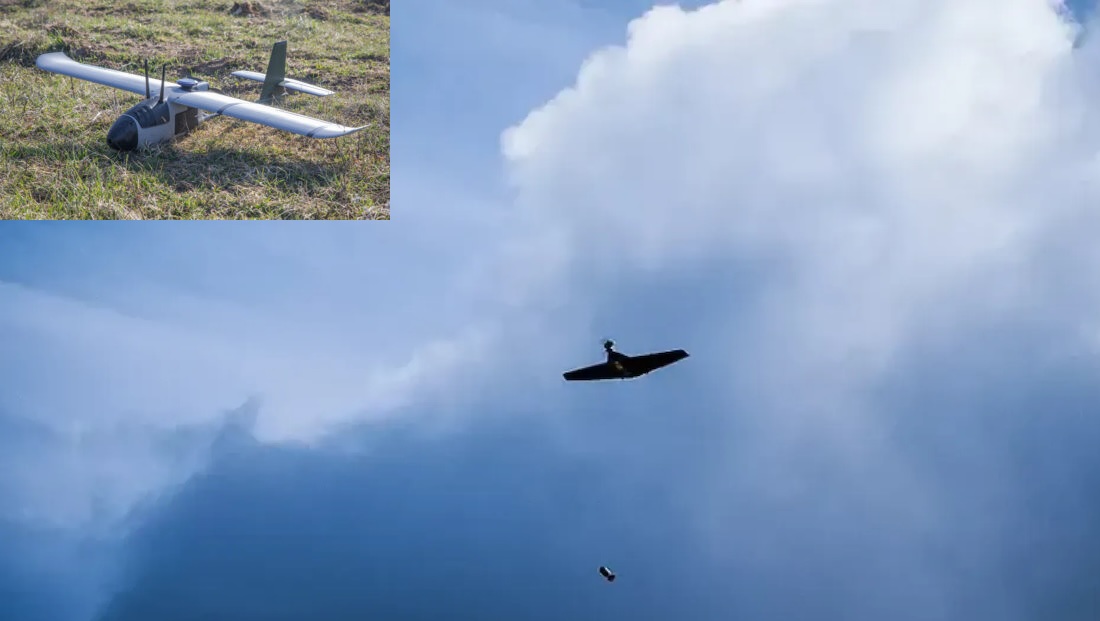 Ukraine Deploys New Indigenous B-1 Combat Drone to Strengthen Frontline Strikes
Ukraine Deploys New Indigenous B-1 Combat Drone to Strengthen Frontline Strikes
-
 Explosion Destroys Key Building at Northrop Grumman’s Rocket Facility in Utah, No Major Injuries Reported
Explosion Destroys Key Building at Northrop Grumman’s Rocket Facility in Utah, No Major Injuries Reported
-
 US Accuses Chinese Satellite Firm of Supporting Huthi Attacks on Red Sea Shipping
US Accuses Chinese Satellite Firm of Supporting Huthi Attacks on Red Sea Shipping
-
 Washington Approves $180 Million Engine Sale to Boost Israel’s Eitan Armored Vehicle Fleet
Washington Approves $180 Million Engine Sale to Boost Israel’s Eitan Armored Vehicle Fleet
-
 U.S. Marines Deploy NMESIS Missile System to Philippines for Balikatan 25, Boosting Coastal Defense and Allied Cooperation
U.S. Marines Deploy NMESIS Missile System to Philippines for Balikatan 25, Boosting Coastal Defense and Allied Cooperation







